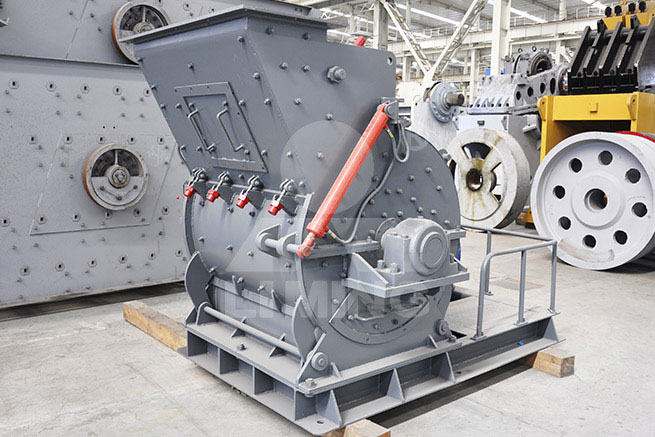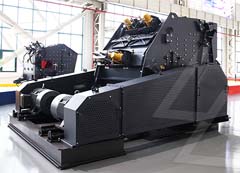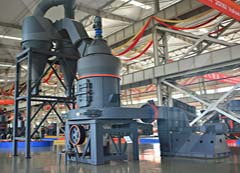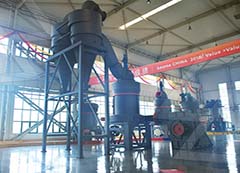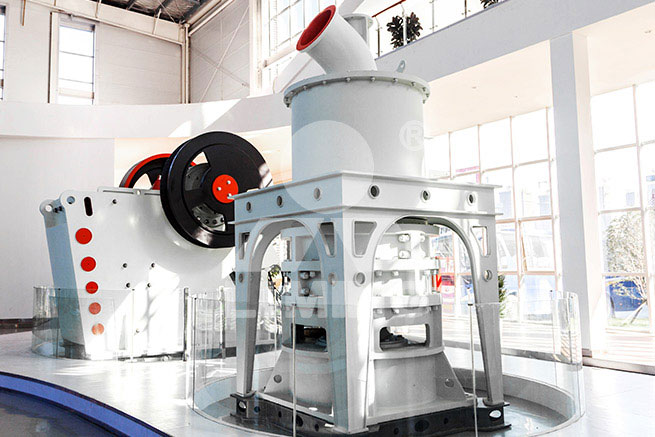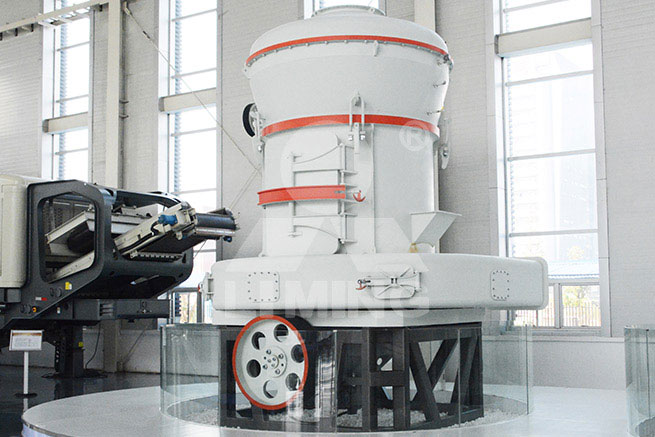crushing of coal in low temperatures

Micro-structure of crushed coal with different
The free radical concentration of oxidized coal is greatly affected by the crushing process. In the particle size range of 0.074-0.125 mm, low-temperature oxidation has
Read More

Natural desorption of carbon monoxide during the
2020-9-20 · The effect of moisture content, temperature, coal-bed gas and pyrite content on self-heating rate at low temperatures was tested under adiabatic conditions Beamish and Theiler (2019). The research on gas emissions during the process of coal extraction was conducted by Grossman et al., 1994 and Lu et al., 2015 .
Read More

Low-Temperature Oxidation of Single and Blended Coals ...
In particular, chemical oxidation at low temperatures is the main factor that results in the spontaneous ignition of coal and relies on many factors,
Read More

Study on the Equivalent Average Temperature Variation of ...
2022-1-18 · Coal with a particle size of 0.25–0.5 and 0.25 mm or less was crushed by the pulverizer and was uniformly mixed at a 1:2 ratio. The coal was uniformly stirred by adding 15% distilled water, and the coal samples were uniformly stirred into a homemade mold, put on a pressure loader, and pressed for 30 min at 60 kN pressure.
Read More

Micro-structure of crushed coal with different
2020-8-1 · Based on metamorphic degree, coal can be divided into lignite, bituminous coal and anthracite. As shown in Fig. 1, the research coal samples were lignite from Yunnan Province, bituminous coal from Hebei Province and anthracite from Shanxi Province, China, designated coal 1#, coal 2# and coal 3#, respectively.The results of proximate analysis of the coal samples are
Read More

(PDF) Crushing properties of coal - ResearchGate
Crushing. to the 0.60–1.18 mm class. Reduction to 200 g; selection of (50 ± 0.01) g sample. Samp le cr ushin g Sample: air dry coal (50 g, 1.25–3.20 mm).
Read More

Spontaneous Combustion of Coal - Practical Maintenance
2017-11-30 · temperatures affect the design and type of ash-handling system employed in coal-utilization plants. At high temperatures, coal ash becomes sticky (i.e., sinters) and eventually forms molten slag. The slag then becomes a hard, crystalline material upon cooling and
Read More

Lecture 32: Coke production
2020-4-3 · Coal or hydrogenation of coal involves raising the atomic hydrogen to carbon ratio. Coal can be converted to liquid and gaseous fuels by direct and indirect processing. Hydrogenation of coal is also called liquefaction of coal. The source of coal is from various coal mines. 33.2 Hydrogenation reaction: 4(C 3 H 4) n + nH 2 nC 6 H 6 + 5nC + nCH 4
Read More

what temperature does coal burn at - Lisbdnet
2021-12-7 · 2400-2700° Fahrenheit. The color of a fire is a rough gauge of how hot it is. Deep red fire is about 600-800° Celsius (1112-1800° Fahrenheit), orange-yellow is around 1100° Celsius (2012° Fahrenheit), and a white flame is hotter still, ranging from 1300-1500 Celsius (2400-2700° Fahrenheit).Nov 21, 2020.
Read More

Crushing Of Coal In Low Temperaturescrushing Of Coal In ...
2022-1-2 · Nov 01, 2015 Moisture content of coal is one of the main factors affecting CO generation during coal crushing, followed by the hardness and destruction degree of coal. For low-temperature oxidation, coal with low metamorphic grade is often easier to be oxidized at ambient temperature because coal with low metamorphic grade contains more active ...
Read More

Thermal Properties and Key Groups Evolution of Low ...
2021-6-2 · Fresh coal samples were collected from the working face and wrapped in cling film in time to arrive at the laboratory for crushing to take internal coal samples, which were crushed with a coal crusher, sieved to a particle size of 0.3–0.45 mm, packed into glass jars, and placed in a vacuum-drying oven for pretreatment.
Read More

Micro-structure of crushed coal with different
The free radical concentration of oxidized coal is greatly affected by the crushing process. In the particle size range of 0.074-0.125 mm, low-temperature oxidation has
Read More

Low-Temperature Oxidation of Single and Blended Coals ...
In particular, chemical oxidation at low temperatures is the main factor that results in the spontaneous ignition of coal and relies on many factors,
Read More

(PDF) Quantum Chemistry Calculation Study on Chain ...
2021-11-4 · low temperatures as active groups and have stronger reactivity, ... coal crushing, a large number of radicals can be generated due to. the
Read More

crushing of coal in coke making process
crushing of coal in coke making process
 Coke Making Process Coke Making Process Note: A larry car charges the individual oven with the blended coal. In the coke oven, the coal is heated to 1,800°F for up to 18 hours. During that time, the volatiles of the coal are driven iRead More
Coke Making Process Coke Making Process Note: A larry car charges the individual oven with the blended coal. In the coke oven, the coal is heated to 1,800°F for up to 18 hours. During that time, the volatiles of the coal are driven iRead More

(PDF) Crushing properties of coal - ResearchGate
Crushing. to the 0.60–1.18 mm class. Reduction to 200 g; selection of (50 ± 0.01) g sample. Samp le cr ushin g Sample: air dry coal (50 g, 1.25–3.20 mm).
Read More

Spontaneous Combustion of Coal - Practical Maintenance
2017-11-30 · temperatures affect the design and type of ash-handling system employed in coal-utilization plants. At high temperatures, coal ash becomes sticky (i.e., sinters) and eventually forms molten slag. The slag then becomes a hard, crystalline material upon cooling and
Read More

Study on the Formation Mechanism of the Pyrolysis
2021-12-15 · The internal part of coal that is not in contact with oxygen will undergo pyrolysis reaction due to heat conduction, and the active groups generated can reverse-aggravate the degree of coal spontaneous combustion. At present, a few studies have been conducted on the pyrolysis mechanism of coal at different temperatures by using mutually validated
Read More

Lecture 32: Coke production
2020-4-3 · Coal or hydrogenation of coal involves raising the atomic hydrogen to carbon ratio. Coal can be converted to liquid and gaseous fuels by direct and indirect processing. Hydrogenation of coal is also called liquefaction of coal. The source of coal is from various coal mines. 33.2 Hydrogenation reaction: 4(C 3 H 4) n + nH 2 nC 6 H 6 + 5nC + nCH 4
Read More

Crushing Of Coal In Low Temperaturescrushing Of Coal In ...
2022-1-2 · Nov 01, 2015 Moisture content of coal is one of the main factors affecting CO generation during coal crushing, followed by the hardness and destruction degree of coal. For low-temperature oxidation, coal with low metamorphic grade is often easier to be oxidized at ambient temperature because coal with low metamorphic grade contains more active ...
Read More

Thermal Properties and Key Groups Evolution of Low ...
2021-6-2 · Fresh coal samples were collected from the working face and wrapped in cling film in time to arrive at the laboratory for crushing to take internal coal samples, which were crushed with a coal crusher, sieved to a particle size of 0.3–0.45 mm, packed into glass jars, and placed in a vacuum-drying oven for pretreatment.
Read More

Micro-structure of crushed coal with different
The free radical concentration of oxidized coal is greatly affected by the crushing process. In the particle size range of 0.074-0.125 mm, low-temperature oxidation has
Read More

Low-Temperature Oxidation of Single and Blended Coals ...
In particular, chemical oxidation at low temperatures is the main factor that results in the spontaneous ignition of coal and relies on many factors,
Read More

(PDF) Quantum Chemistry Calculation Study on Chain ...
2021-11-4 · low temperatures as active groups and have stronger reactivity, ... coal crushing, a large number of radicals can be generated due to. the
Read More

(PDF) Crushing properties of coal - ResearchGate
Crushing. to the 0.60–1.18 mm class. Reduction to 200 g; selection of (50 ± 0.01) g sample. Samp le cr ushin g Sample: air dry coal (50 g, 1.25–3.20 mm).
Read More

Characteristics of mass, heat and gaseous products during ...
2017-10-5 · Thermogravimetric dynamics and FTIR analysis on oxidation properties of low-rank coal at low and moderate temperatures. Int J Coal Prep Util. 2015;35:39–50. Article Google Scholar 25. Zhang YL, Wang JF, Wu JM, Xue S, Li ZF, Chang LP. Modes and kinetics of CO 2 and CO production from low-temperature oxidation of coal. Int J Coal Geol. 2015;140 ...
Read More

Iron Smelting with Non-Coking Coals in Low Shaft
of coal largely determined stability of the briquettes within the furnace. As the briquettes were subjected to progressively increasing load and higher temperatures during their descend, the room temperature crushing strength of the green briquettes or after their carbonization at various
Read More

Lecture 32: Coke production
2020-4-3 · Coal or hydrogenation of coal involves raising the atomic hydrogen to carbon ratio. Coal can be converted to liquid and gaseous fuels by direct and indirect processing. Hydrogenation of coal is also called liquefaction of coal. The source of coal is from various coal mines. 33.2 Hydrogenation reaction: 4(C 3 H 4) n + nH 2 nC 6 H 6 + 5nC + nCH 4
Read More

The effects of high temperature on the compaction ...
2019-9-11 · When mining coal in deep areas, ground temperatures gradually rise. According to measurement of ground temperatures in deep mines (He et al. 2010 ; Yuan 2007 ) and the temperature gradient (He and Guo 2013 ), ground temperatures are generally above 40 °C in areas deeper than 1 km, while it is generally above 60 °C at 2 km and deeper.
Read More
- << Previous:Captains Of Crush Trainer
- >> Next:Temporary Concrete Batch Plant Vendors


